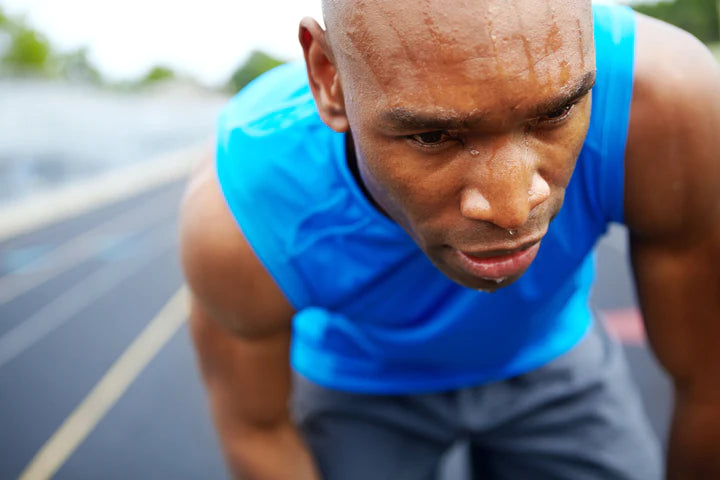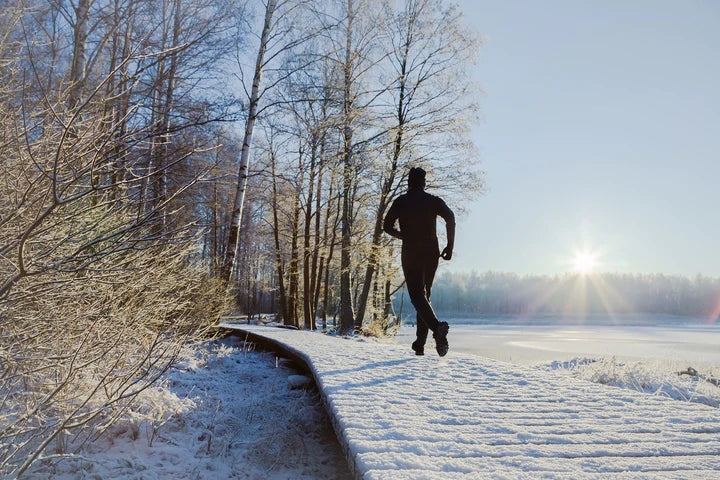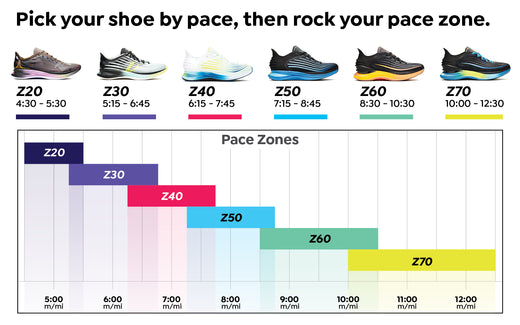How Vimazi Running Shoes Feel - And Why
It’s always interesting and informative to try on new running shoes. But what does trying on shoes tell us? As runners, the only real feedback we get from our shoes is how they feel to us. And if you’re alive to the sensations, that can be a lot of feedback!
We feel fit and sizing all over the foot; we can feel the temperature and how the shoe insulates from the cold or traps in heat and sweat; we feel the wobbliness or stability while standing, but also when turning a corner or running over uneven ground; and we feel how the midsole gives under our feet when we press at the heel or forefoot.
The challenge is understanding how to interpret the way a shoe feels with regard to how it will keep you healthy and energized when running day after day. Here are some of the ways we use the design and construction to ensure the best fit, cushioning, propulsion efficiency, and stability. Said another way, these are some ways to think about and interpret the sensations we all feel when testing out running shoes, especially Vimazi pace-tuned running shoes.
SIZING & LACING
Before you can accurately sense how a running shoe feels, you need to spend a few minutes getting the fit exactly right. Thankfully, laces are the best fit invention ever created. This means that as long as you have the correct length (size), you should be able to fine tune the fit just so.
SOFTNESS & SHOCK REDUCTION
Perhaps the most important thing you want to know about a running shoe is how it handles shock so that your joints, tendons, and cartilage remain healthy through all the pounding. When we step on a shoe with all our weight, we can feel it compress and can easily tell the difference between say, a hard leather sole and a foam midsole. Many runners can sense a difference in softness between running shoes. But what about more subtle differences between the midsoles of different running shoes? How do those differences translate into the health of your joints and tissues over miles of running? Is softer necessarily better? Are there tradeoffs or limits to various degrees of softness?
These are complicated questions. The trouble is that we all try to answer these questions base on how a shoe feels for a few minutes on the carpet of a running shoe store. Not ideal!
In designing Vimazi shoes, we calculated the optimal midsole density (the softness) for a given range of impact forces. What is “optimal”? It is the most gradual stopping force, meaning that we don’t want the body to stop too quickly or for the shoe to bottom out and end abruptly. You can’t make the stopping force go away, you can just spread it out smoothly so you get the least possible stress. In engineering, it’s called critical damping. It is very difficult, perhaps impossible, to feel the curve of critical damping just standing or walking in a shoe. With practice, you can get a better feel for it when running at a specific pace. What does that feel like? It feels like a smooth transition from landing to push off.
The unique thing about Vimazi is that we have specified the midsole densities for different pace zones so that you get that smooth transition feel whether you are running 12:00 min/mile or sub 5:00.
PUSH-OFF
Your push-off begins as soon as your foot hits the ground. It initially feels like the impact and push off are in sequence because push-off begins gradually and impact begins abruptly and is short lived. But the two are superimposed (see chart, below). So the entirety of the time your feet spend on the ground during a running stride is spent pushing off. Your impact time, on the other hand, is quite short and overlaps with the earliest stage of push-off. Impact only lasts about one-third of the time, and even if we wanted to extend it further and make the impact even more gradual, we couldn’t.

In addition to the time it takes to push off, the force you exert in the forefoot is 2 to 3 times greater than the force at the heel. Therefore, to balance the amount of sole compression with the higher amount of force during push off, the midsole foam density needs to be higher. How much higher? It depends on your pace, which is why we carefully tune and test the density in our forefoot FastPods to make certain your shoe is responding to the forces you’re putting on it. That’s why pace-tuned shoes are necessary.
All this means that when you stand on a pair of our shoes, you’ll feel a firmer forefoot than many other shoes. But when you run in Vimazis, you’ll feel just the right amount of cushioning because the heel and midfoot are tuned separately (see above).
The key thing to remember is that even though it all happens really quickly, push off is not impact and doesn’t generate a shock. When the forefoot is too soft, you don’t gain anything in shock absorption, but you definitely lose something in energy efficiency.
STABILITY
Stability (or lack thereof) is another thing we feel when running, and it’s super important to long-term healthy running. Just as with shock absorption, feeling the stability of a shoe while standing doesn’t translate to stability when running because the force on the forefoot is much greater than the force at the heel.
It’s actually more complicated than that because the foot and ankle pronate during every step and the peak pressure point is constantly moving. What we want in a shoe is for the foot to follow its natural motion as if you were barefoot. But at the same time, we want to put cushioning underneath it. In other words, we want the shoe to feel like a natural, shock absorbing, extension of your foot.
Vimazi shoes are engineered to deliver this natural feel. The higher density FastPod in the forefoot creates a more secure, level, platform for the foot to push on. This means that as you push harder under the big toe and inside of the foot than on the outside, the shoe doesn’t deform and tilt over as much as a softer shoe would. This has the feeling of being more stable and secure. In the long run it means less stress on the foot and ankle joints.




